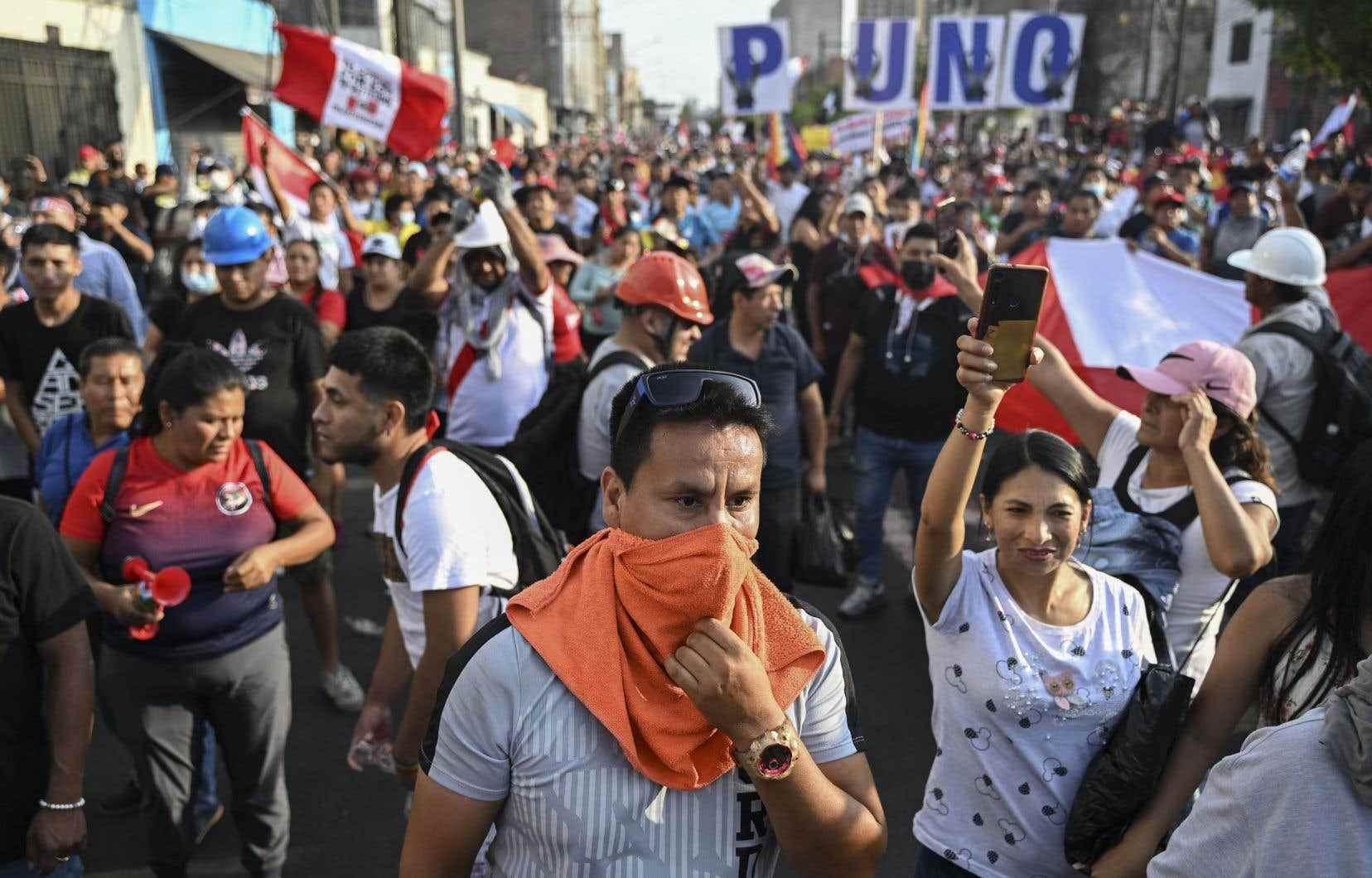Thousands of people, especially from the Andes, demonstrated to demand the resignation of Peruvian President Dina Boluarte on Thursday in downtown Lima, where violent clashes broke out between protesters and the many police deployed.
The clashes left two new dead in the south of the country. In Arequipa, Peru’s second city, violent clashes around the airport resulted in one death – a man in his thirties – and ten injured, according to the office of the People’s Ombudsman.
A little earlier, the office had announced the death of another man, injured the day before in clashes in Macusani, near Puno on the Bolivian border.
This brings to 45 (44 demonstrators and a policeman) the number of people who have lost their lives in the unrest since December 7, the date of the start of the crisis.
In Lima, a large part of the demonstrators marched calmly. But violent clashes took place in the city center, demonstrators throwing stones, cobblestones or bottles at the police, or confronting them directly armed with sticks.
In several places, the forces of order had to retreat under pressure before regaining their position. In particular in the city center, in the area of Abancay and Pierola avenues, noted journalists from Agence France-Presse.
The security forces made extensive use of tear gas.
An Agence France-Presse journalist saw at least two people injured, and the police made several arrests.
A downtown building near Plaza San Martin, the epicenter of protests in Lima, went up in flames for unknown causes shortly before 8:00 p.m. local time (01:00 GMT).
“We have 11,800 police on the streets for riot control. We have more than 120 vans and 49 military vehicles and also the participation of the armed forces,” said General Victor Zanabria, chief of police for the Lima region, in the morning.
“We are here to fight for a just cause. We want the dissolution of Parliament. They marginalize us, they say we are vandals, terrorists. We are here to claim our rights”, explains Ayda Aroni, arrival from the Ayacucho region, in the central square of 2 of mayo.
In traditional dress – black hat, white shirt and red skirt – and carrying a colorful bag, she waves a Peruvian flag whose red stripes have been replaced by black as a sign of mourning for the dead protesters.
“Take Lima”
The protesters, who are calling for new elections in Peru, intended to “take Lima” and strike the spirits.
“In Lima, the fight will have more weight. When they repress us in our regions, no one talks about it,” said Abdon Félix Flores Huaman, a 30-year-old farmer who says he is ready to “give his life.” He left Andahuaylas on Sunday, the epicenter of the demonstrations in December, to arrive in the capital on Tuesday.
Demonstrators also tried to take the airport of Cuzco, the tourist capital of the country, which was closed.
“The struggle of the Peruvian people will not end tomorrow, the struggle will continue if Dina Boluarte does not listen to the people and acts with arrogance”, had launched on Wednesday the general secretary of the General Confederation of Workers of Peru (CGTP), the author of the strike call.
The government on Sunday declared a state of emergency for 30 days in Lima, Cuzco, Callao and Puno, which allows the army to intervene to maintain order and suspends freedom of assembly and movement. But, according to the union leader, the organizers of the demonstration in Lima did not seek authorization.
The unrest in Peru erupted after the dismissal and arrest on December 7 of leftist President Pedro Castillo, accused of having attempted a coup d’etat in order to dissolve the Parliament which was preparing to oust him from power.
The crisis is also a reflection of the huge gap between the capital and the poor provinces that supported President Castillo, of Amerindian origin, and saw his election as revenge for Lima’s contempt.
President Boluarte had called for calm on Monday: “We know that they want to ‘take’ Lima in view of everything that comes out on the networks. Let them take Lima, yes, but in peace and calm”.
Ms. Boluarte, who was Mr. Castillo’s vice-president, succeeded him in accordance with the Constitution. She comes from the same party as him but the demonstrators see her as a “traitor”.
